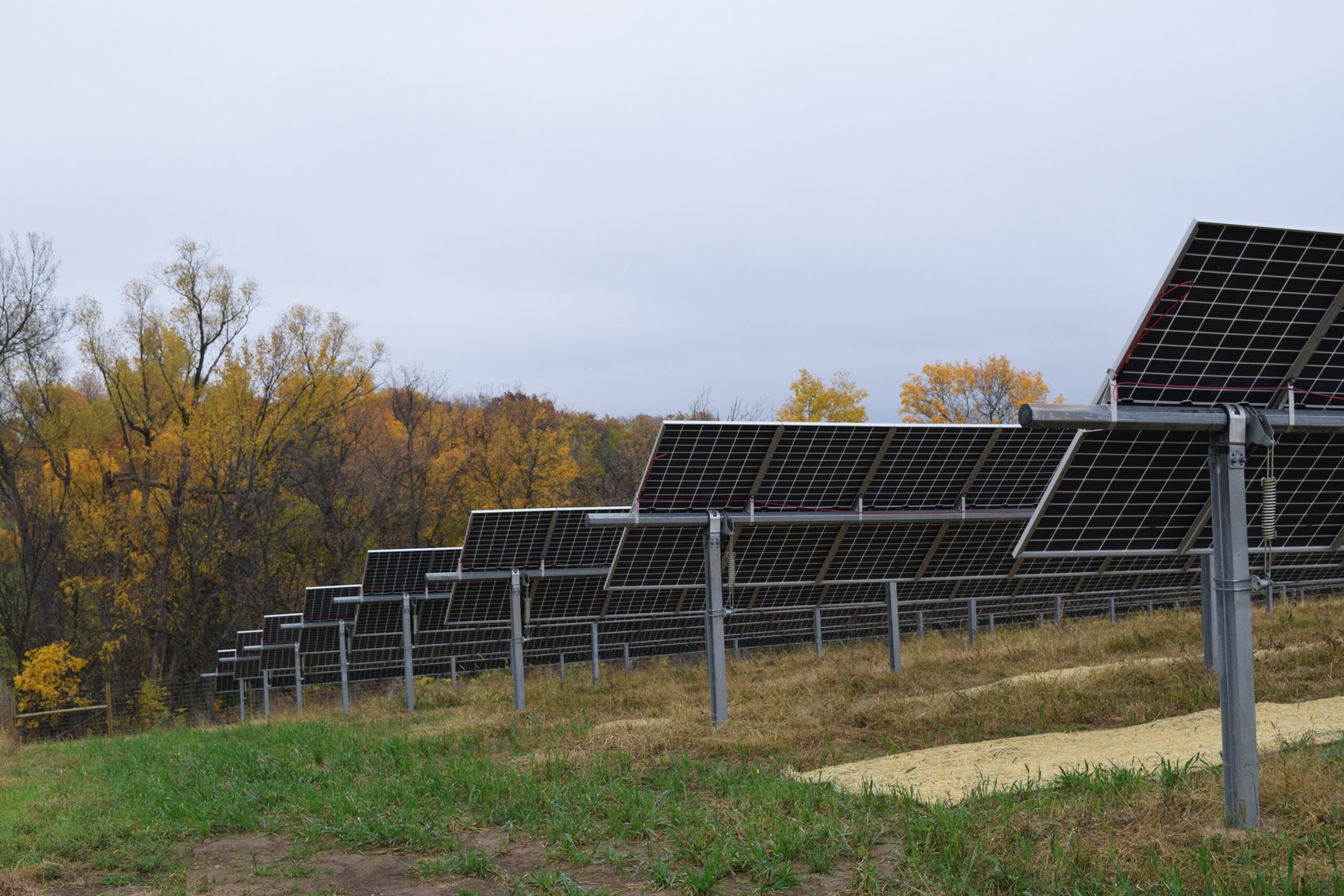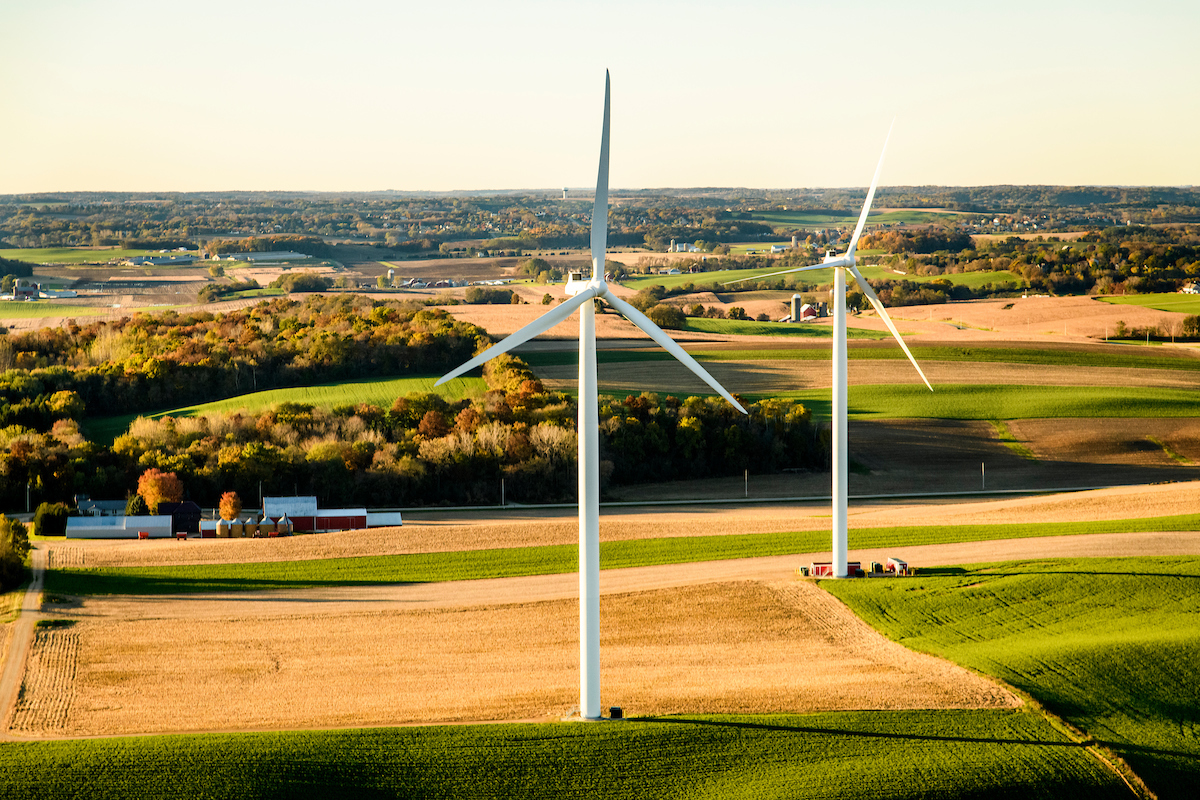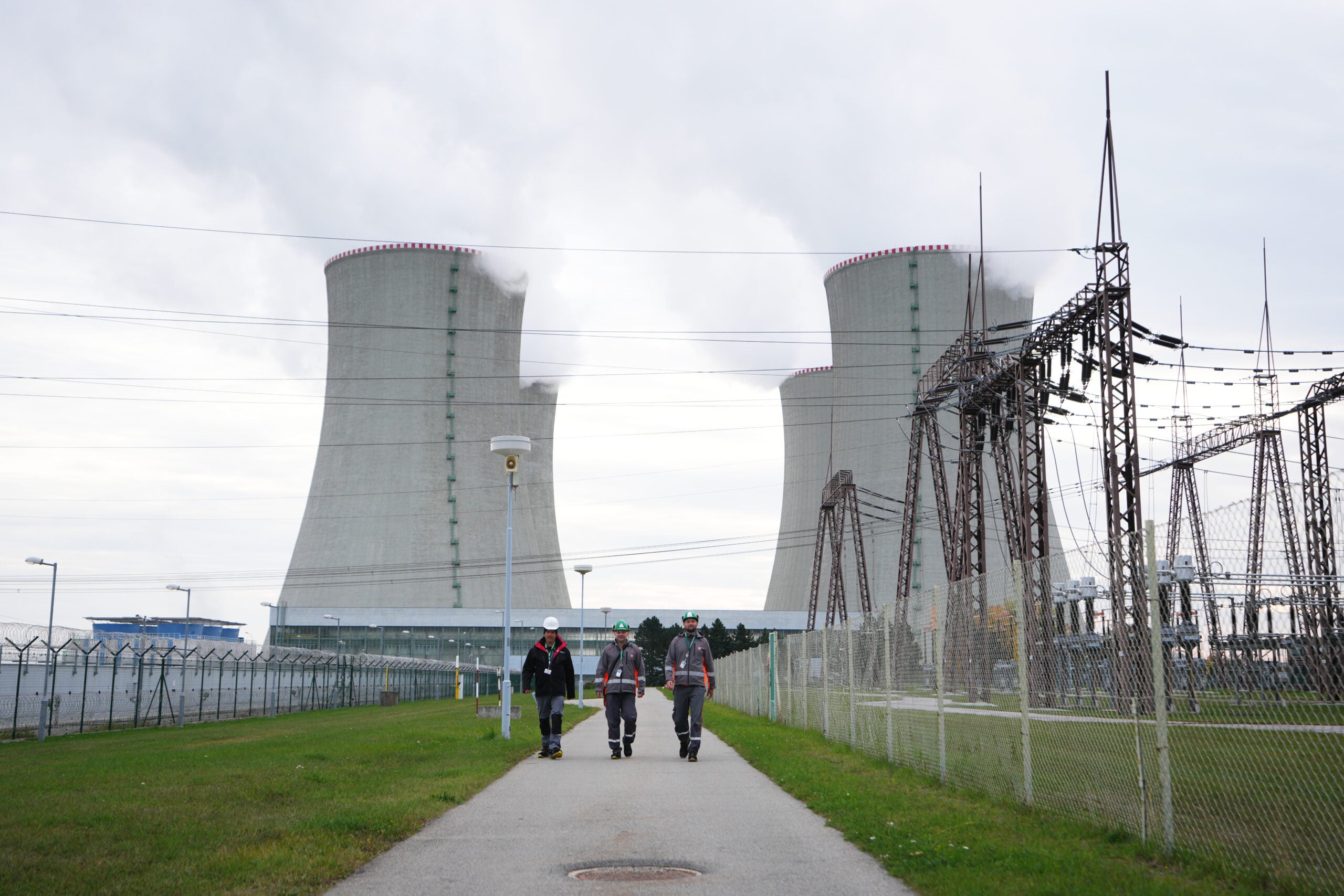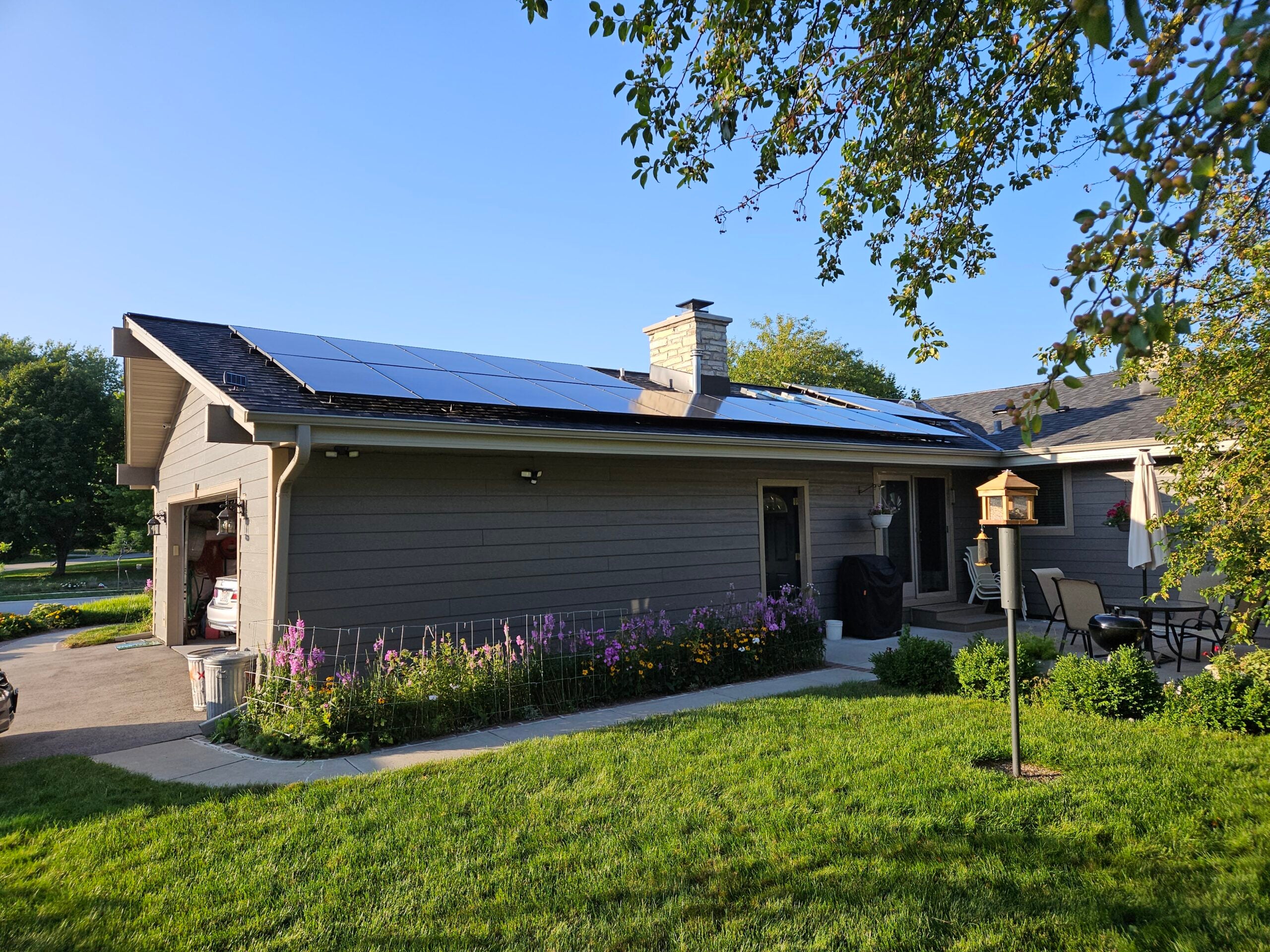President Donald Trump’s sweeping “big, beautiful bill” would slow down Wisconsin’s clean energy transition, raise electricity costs for consumers and jeopardize hundreds of jobs, according to clean energy advocates and analysts.
The U.S. House of Representatives voted 218-214 to pass the One Big Beautiful Bill Act on Thursday, days after Vice President JD Vance cast the tie-breaking vote on the bill in the Senate. The bill extends the 2017 tax cuts, while slashing federal Medicaid and food stamps spending.
Trump is expected to sign the legislation into law on Friday.
News with a little more humanity
WPR’s “Wisconsin Today” newsletter keeps you connected to the state you love without feeling overwhelmed. No paywall. No agenda. No corporate filter.
It also phases out tax credits for wind and solar energy that were broadened in the 2022 Inflation Reduction Act, signed into law by former President Joe Biden.
An eleventh hour amendment made in the Senate will allow renewable energy projects that begin construction by 2026 or come online by 2027 to receive tax credits, which is slightly less restrictive than a previous version of the bill. Senators also removed an excise tax on wind and solar projects that was quietly added to the bill over the weekend.
But Ciaran Gallagher, energy and air manager at Clean Wisconsin, said those changes transformed the bill from “a true disaster to just really, really bad.”
“This budget bill still requires wind and solar to come online by 2027 to get any sort of tax credit,” she said. “We’re in the middle of an affordability crisis, and repealing the tax credits from Biden’s Inflation Reduction Act will raise energy costs for all Americans.”
Under the IRA, solar and wind projects would have to begin construction before 2034 to qualify for a “technology neutral” tax credit, according to Sidley Austin, an American multinational law firm.
In addition to phasing out credits for developers, the megabill would also end tax credits for energy efficiency upgrades at homes and businesses and electric vehicle purchases by 2026.
Of the $5.3B in private investment announced since 2022, $2.3B remains unspent
Since July 2022, nearly $5.3 billion of private sector clean energy investment has been announced in Wisconsin, of which $2.9 billion had been spent as of the first quarter of 2025. That’s according to data from Clean Investment Monitor, a joint effort between Massachusetts Institute of Technology and Rhodium Group, a New York-based policy research company.
Of the projects announced, more than $2.3 billion still had not been spent across 17 projects, Clean Investment Monitor found. Those projects were associated with more than 2,500 outstanding construction jobs.
Hannah Hess, associate director at the Rhodium Group, said the bill “introduces a lot of uncertainty” for the developers behind those outstanding projects who factored the tax credits into their financial plans.
“We’re injecting a lot of uncertainty into those projects at a time when the U.S. is needing more electricity than ever,” Hess said. “We have a greater demand due to using technologies like AI and data centers — those are adding more demand to the power system.”
Tim Baye, a professor of business development and a state energy and energy finance specialist with the University of Wisconsin–Madison Extension, said developers have been rushing since November to get planned projects moving in time to qualify for tax credits.
While there may be an initial rush to meet requirements for tax credits in the short term, Baye said he expects the bill will cause a slowdown in renewable development once those incentives sunset.
“We’re going to see a real slowdown,” he said. “It’s going to have a chilling effect.”
Emily Pritzkow, executive director of the Wisconsin Building Trades Council, said the Inflation Reduction Act led to a wave of clean energy investment that gave more opportunities to Wisconsin union workers.
She said the bill could “threaten to tear down years of progress” in building the clean energy workforce in Wisconsin.
“These aren’t just any jobs building this clean energy infrastructure,” Pritzkow said. “They’re family-supporting. They’re union careers. They pay good wages, comprehensive benefits, and they are all over the state, urban [and] rural areas.”
GOP megabill could raise energy prices
Energy Innovation, a California-based climate policy think tank, estimates the Senate bill will drive up household energy prices nationally by $130 in 2030 and $170 by 2035. Those price increases will “vary significantly by state,” the think tank said in a report Tuesday.
Energy Innovation’s preliminary estimate for Wisconsin had more modest price increases at $60 per household in 2030 and $190 per household in 2035. Those increases are lower than the think tank’s earlier modeling of the House-passed bill. The estimate for Wisconsin could change as Energy Innovation continues to do state-by-state modeling, the organization said in an email.
Baye said a slowdown in renewable energy development could lead to higher electricity prices because utilities would be more reliant on volatile fossil fuel costs for gas or coal. He said wind and solar are “fixed cost” systems, where they have initial construction costs but then no fuel costs once they’re online.
“Logic would say, if my sources of generation from assets that are fixed price are going to be flat lined or diminished, and my sources of generation from facilities that are exposed to price increases or price volatility, you’d come to expect that we will see increases in the cost of electricity in the state of Wisconsin,” he said.
Tom Content, executive director for the Citizens Utility Board of Wisconsin, told WPR’s “Wisconsin Today” that the GOP megabill would have “a real impact” on the state.
“We’ve been seeing a lot of growth in that sector, which has helped keep costs down for customers overall,” Content said, calling the bill “a real concern.”
He added that removing energy efficiency incentives for homeowners also gives customers fewer opportunities to make upgrades that lower their utility bills.
Robbie Orvis, senior director of modeling and analysis at Energy Innovation, said the bill does include some provisions to allow for more oil and gas drilling and leasing, but increased demand would offset price reductions from increased supply. He also said the natural gas turbine supply chain is “completely backed up” by five to seven years.
“If there’s new supply that’s needed, the only thing that can be built on that timeline is wind, solar and battery storage,” Orvis said. “Utilities are going to have to build that stuff to maintain reliability. They don’t have a choice. Now we’ve made it much more expensive for them to do that.”

Nuclear industry says bill supports ‘cutting-edge nuclear technologies’
But the Inflation Reduction Act has long been a target of Republican criticism for its large price tag. The libertarian Cato Institute think tank estimates energy subsidies in the act will cost between $936 billion and $1.97 trillion over the next 10 years.
In a news release after Trump’s budget bill cleared the Senate, the White House said the legislation “ends Biden’s war on American energy and drives down energy costs.”
Maria Korsnick, president and chief executive officer of the Nuclear Energy Institute trade group, said in a statement Tuesday that the bill restores a pair of nuclear tax credits through 2032 and 2033, helping give developers confidence to invest in new plants.
“The bill allows us to continue down the path to achieve the Administration’s ambitious goals for deploying new, cutting-edge nuclear technologies,” Korsnick stated.
Similarly, the American Petroleum Institute praised the bill. Mike Sommers, president of the trade association, said in a statement Tuesday that the bill “will help usher in a new era of energy dominance by unlocking opportunities for investment, opening lease sales and expanding access to oil and natural gas development.”
Solar developer remains optimistic about industry’s future
Despite the budget bill taking aim at clean energy credits, Jon Baker, vice president of development at Doral Renewables, the company developing the state’s largest ever solar project in Portage County, said Monday that he’s still optimistic about the renewable energy industry’s future.
He said solar is the best-positioned option to meet growing energy demand due to long lead times on natural gas and nuclear power plants, and the price stability of getting energy from the sun compared to fossil fuels.
“While there may be some short-term fluctuations and especially legislation that can provide some headwinds, we know that over the long-term the most cost effective and beneficial forms of energy will ultimately get built,” he said. “We’re optimistic that those fundamental facts about solar will support the industry.”
Editor’s note: The Citizens Utility Board of Wisconsin is a sponsor of WPR.
Wisconsin Public Radio, © Copyright 2025, Board of Regents of the University of Wisconsin System and Wisconsin Educational Communications Board.





